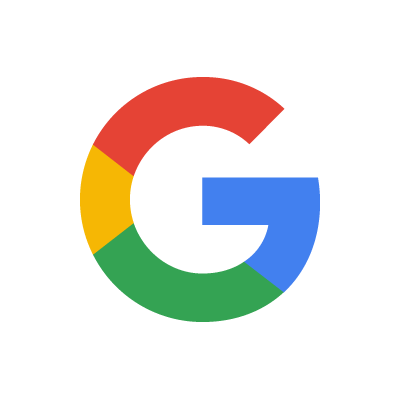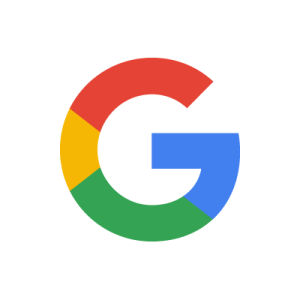how much google advertising cost


how much google advertising cost Are you wondering how much Google advertising costs? Well, let’s dive into the details and uncover the factors that determine the expenses of advertising on this popular platform.
When it comes to Google advertising, the cost can vary significantly. Google offers different advertising options like Google Ads, Display Network, YouTube Ads, and more, each with its own pricing structure. The cost primarily depends on your advertising goals, competition, targeting, and the ad format you choose.
One crucial aspect that affects the cost is the bidding system used by Google Ads. It operates on a pay-per-click (PPC) model, where advertisers bid for keywords relevant to their business. Popular keywords with high search volumes often have higher bids. This means that if you want to target competitive keywords, you might need to allocate a larger budget.
Another factor impacting the cost is the quality score of your ads. Google considers the relevance of your ad to the user’s search query and the landing page experience. Ads with higher quality scores are rewarded with better ad placements and lower costs.
The geographical location you target can also influence your advertising costs. Advertisers often find that certain regions or countries have higher competition, leading to increased prices. Additionally, peak seasons or specific events might affect the cost as well.
Furthermore, the ad format you choose plays a role in determining the expenses. Text ads generally have lower costs compared to image or video ads. Video ads, especially those shown on YouTube, may require additional production expenses, affecting the overall budget.
To give you a rough idea, the average cost per click (CPC) for Google Ads ranges from a few cents to several dollars. However, keep in mind that these figures can vary significantly depending on the factors mentioned earlier.
the cost of advertising on Google is influenced by various factors such as bidding, quality score, geographical targeting, and ad format. To get the most out of your advertising budget, it’s crucial to carefully plan your campaigns, conduct thorough keyword research, and continuously optimize your ads based on performance.
Remember, investing wisely in Google advertising can help you reach a wider audience, drive targeted traffic to your website, and ultimately grow your business online.
Unveiling the Price Tag: Exploring the Cost of Google Advertising and Its Impact on Businesses
Have you ever wondered how much it costs to advertise on Google? In this article, we’ll dive into the world of Google advertising and uncover its true price tag. From small businesses to multinational corporations, Google advertising has become an essential tool for reaching a wider audience and driving online visibility.
When it comes to Google advertising, there are several factors that contribute to the cost. One of the primary elements is the bidding system. Advertisers bid on keywords related to their products or services, and the cost per click (CPC) is determined by the competition for those keywords. Popular keywords tend to have higher bids, which can drive up the overall cost of advertising.
Another factor that affects the cost is the quality score. Google assigns a quality score to each ad based on its relevance and performance. Ads with higher quality scores are rewarded with lower costs per click and better ad placements. So, optimizing your ads and landing pages for relevancy and user experience can help reduce costs and improve results.
The cost of Google advertising also varies depending on the targeting options and ad formats you choose. Google offers various targeting methods, including location, demographics, interests, and more. The broader your targeting, the more impressions your ads will receive, but it may also increase costs. Likewise, different ad formats such as text ads, display ads, or video ads come with varying price points.
Now let’s talk about the impact of Google advertising on businesses. With billions of searches happening every day, Google provides an unmatched platform to reach potential customers. By appearing at the top of search engine results pages, businesses can increase brand visibility and attract highly targeted traffic to their websites.
Google advertising also allows for precise measurement and tracking of campaign performance. Through tools like Google Analytics, businesses can analyze important metrics such as click-through rates, conversion rates, and return on investment. This valuable data enables advertisers to make informed decisions, optimize their campaigns, and achieve better results over time.
Google advertising comes with a price tag that can vary depending on various factors. While it requires an investment, the impact it has on businesses is undeniable. From reaching a wider audience to measuring performance accurately, Google advertising has become an indispensable part of the marketing mix for businesses worldwide. So, if you’re looking to expand your online presence and drive business growth, exploring the world of Google advertising is definitely worth considering.
From Startups to Corporations: The Economics Behind Google’s Advertising Costs
Have you ever wondered how Google manages to rake in massive profits year after year? One of the key contributors to Google’s success lies in its advertising platform, which plays a crucial role in its revenue generation. But have you ever wondered what factors influence the costs associated with Google’s advertising? Let’s delve into the economics behind this intriguing aspect.
Google uses a pay-per-click (PPC) model for its advertising platform, known as Google Ads. This means that advertisers are only charged when someone clicks on their ads. The cost per click (CPC) is influenced by various factors, such as keyword competitiveness, ad relevance, and Quality Score. Essentially, the more competitive a keyword is, the higher the CPC will be.
Quality Score is a metric used by Google to assess the quality and relevance of an ad and its corresponding landing page. Higher Quality Scores lead to lower CPCs, as Google rewards advertisers who provide valuable and relevant content to users. Therefore, it’s crucial for advertisers to optimize their ads and improve their Quality Scores to reduce costs.
Another important factor impacting advertising costs is the auction system employed by Google. When multiple advertisers target the same keywords, an auction takes place to determine the ad placements. The advertiser with the highest bid and best Quality Score gets the top position, while others are placed accordingly. Advertisers bid on keywords based on their perceived value and return on investment (ROI). Consequently, highly competitive industries tend to have higher advertising costs due to increased competition.
Furthermore, the concept of ad rank plays a significant role in determining advertising costs. Ad rank is calculated by multiplying the advertiser’s maximum bid with their Quality Score. A higher ad rank not only improves ad visibility but can also result in lower CPCs. This incentivizes advertisers to focus on improving both their bids and Quality Scores to achieve a favorable ad rank.
the economics behind Google’s advertising costs are multifaceted. Factors such as keyword competitiveness, ad relevance, Quality Score, bidding strategies, and ad rank all play a role in determining the costs associated with Google Ads. Advertisers must strategically optimize their campaigns to achieve a balance between visibility and cost-effectiveness. By understanding these economic dynamics, businesses ranging from startups to corporations can make informed decisions and leverage Google’s advertising platform for optimal results.
Decoding Google’s Advertising Expenses: How Much Does It Really Cost to Reach Your Target Audience?
Introduction:
Have you ever wondered how much it really costs to reach your target audience through Google advertising? In this article, we will delve into the details of Google’s advertising expenses and uncover the factors that determine the cost. By understanding these intricacies, you can make informed decisions about your ad campaigns and optimize your budget for maximum impact.
Understanding Google’s Advertising Model:
Google offers a variety of advertising platforms, including Google Ads, Display Network, and YouTube Ads. The cost of reaching your target audience depends on various factors such as the type of ad campaign, bidding strategy, targeting options, and competition in your industry.
Bidding Strategies: Setting the Right Price
One crucial aspect of Google advertising is bidding. When you create an ad campaign, you choose a bidding strategy that determines how you pay for clicks, impressions, or conversions. Popular bidding strategies include cost-per-click (CPC), cost-per-thousand impressions (CPM), and cost-per-acquisition (CPA). Each strategy has its own cost implications, and selecting the right one for your goals is key.
Targeting Options: Reaching the Right Audience
Google provides extensive targeting options to help you reach your desired audience. You can narrow down your audience based on demographics, interests, locations, languages, and even specific websites and apps. The more specific your targeting, the higher the chances of reaching your ideal customers. However, niche targeting may come at a higher cost due to increased competition.
Competition and Quality Score: The Battle for Ad Placement
Competition plays a significant role in determining the cost of advertising on Google. Industries with high competition often have higher advertising costs. Additionally, Google ranks ads based on their quality score, which considers factors like ad relevance, expected click-through rate, and landing page experience. Higher-quality ads enjoy better ad placement and can lead to lower costs.
The Impact of Ad Format and Ad Extensions:
Google offers various ad formats, including text ads, image ads, video ads, and shopping ads. Different formats have different cost structures, with video and display ads generally being more expensive than text ads. Moreover, utilizing ad extensions like call extensions, sitelink extensions, or location extensions can enhance the visibility and appeal of your ads, potentially impacting their cost.
Conclusion:
Decoding Google’s advertising expenses involves considering several factors that influence the cost of reaching your target audience. By understanding bidding strategies, targeting options, competition, ad format, and ad extensions, you can optimize your budget for effective campaigns. Remember, finding the right balance between cost and impact is crucial in maximizing your return on investment (ROI) and achieving your advertising goals.
The Art of Budgeting: A Deep Dive into Google Advertising Costs and Effective Strategies for Maximizing ROI
Are you ready to take your online advertising game to the next level? Look no further than Google Advertising. In this article, we’ll delve into the world of Google Advertising costs and uncover some effective strategies to maximize your return on investment (ROI). So, let’s jump right in!
When it comes to budgeting for Google Advertising, it’s crucial to have a clear understanding of how costs are determined. With Google Ads, you have control over your spending through a bidding system. Keywords play a significant role here. Highly competitive keywords tend to have higher costs per click (CPC), while less popular ones can be more affordable.
To make the most of your budget, consider employing long-tail keywords. These are more specific phrases that target a niche audience. While they may have lower search volumes, long-tail keywords often come with lower competition and cost. By focusing on these keywords, you can effectively reach your target audience without breaking the bank.
Another strategy to optimize your budget is by implementing geographic targeting. If your business operates locally, targeting specific regions or cities can help you narrow down your audience and prevent unnecessary costs. This way, you can allocate your budget where it matters most and increase the chances of attracting relevant customers.
Additionally, don’t overlook the power of ad scheduling. By analyzing data and understanding when your target audience is most active, you can schedule your ads to appear at optimal times. This ensures that your budget is utilized during peak periods, increasing the likelihood of clicks and conversions.
Furthermore, continuous monitoring and optimization are key to maximizing ROI. Regularly review your campaign performance and make adjustments as needed. Experiment with different ad formats, headlines, and calls-to-action to find what resonates best with your audience. Remember, it’s an ongoing process, and staying proactive is vital.
mastering the art of budgeting in Google Advertising requires careful planning, smart targeting, and constant optimization. By understanding how costs are determined and implementing effective strategies like long-tail keywords, geographic targeting, ad scheduling, and continuous monitoring, you can make the most of your budget and achieve impressive ROI. So, gear up, dive into the world of Google Advertising, and watch your online presence soar!
